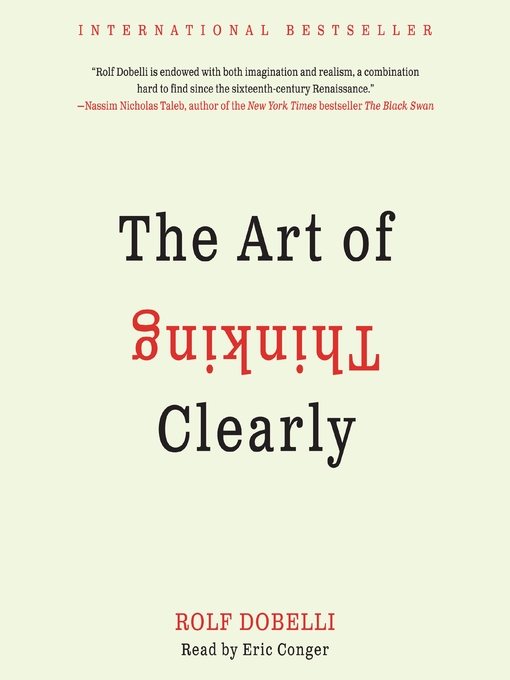
The Art of Thinking Clearly
کتاب های مرتبط
- اطلاعات
- نقد و بررسی
- دیدگاه کاربران
نقد و بررسی

Written by a novelist and Swiss intellectual, this conversational audio guide explains how to recognize thinking errors like trusting social proof (if everybody believes it, it must be true) and succumbing to the "availability bias" (relying on information that is in front of us instead of what is relevant). Eric Conger's performance has a serious documentary quality that lightens from time to time but keeps the personality in this writing tamped down more than is necessary. While his tonal range sounds repetitive, his impeccable phrasing makes everything clear. This audio production offers an encyclopedia of insights that, more than just improving our thinking, is a fascinating overview of how instinctual thinking biases can lead us to crazy-wrong conclusions and diminish our effectiveness in everyday life. T.W. © AudioFile 2014, Portland, Maine

March 25, 2013
In an age saturated by unprecedented levels of stimuli, it’s harder than ever to do what David Foster Wallace termed “decidering”—that is, figuring out what to ignore, and what to focus on. “Thinking more clearly and acting more shrewdly” requires an enormous amount of effort. But Swiss thinker Dobelli, founder of the ZURICH.MINDS think tank, maintains that mastering this “art” is the key to avoiding “systematic cognitive errors” and achieving success. He maps out these blunders and how to avoid them in brief, pointed chapters, and while each is interesting in its own right, together they are overwhelming: 300 or so pages are minced into 99 chapters. Their format is also wearying—each section consists of a concept (e.g., Paradox of Choice, Fundamental Attribution Error, etc.) wrapped in a tight anecdote that ends too often with a blunt “In conclusion….” As evinced by the epilogue, wherein Dobelli discusses the via negativa, or the path of exclusion, this is mostly about figuring out how to shuck off the unnecessary or the obfuscating. There’s little in the way of advice regarding what to pay attention to, and while this makes Dobelli’s wisdom widely applicable, readers will likely walk away with a much clearer sense of just how foggy the notion of clarity is. Agent: John Brockman, Brockman Inc.

























دیدگاه کاربران